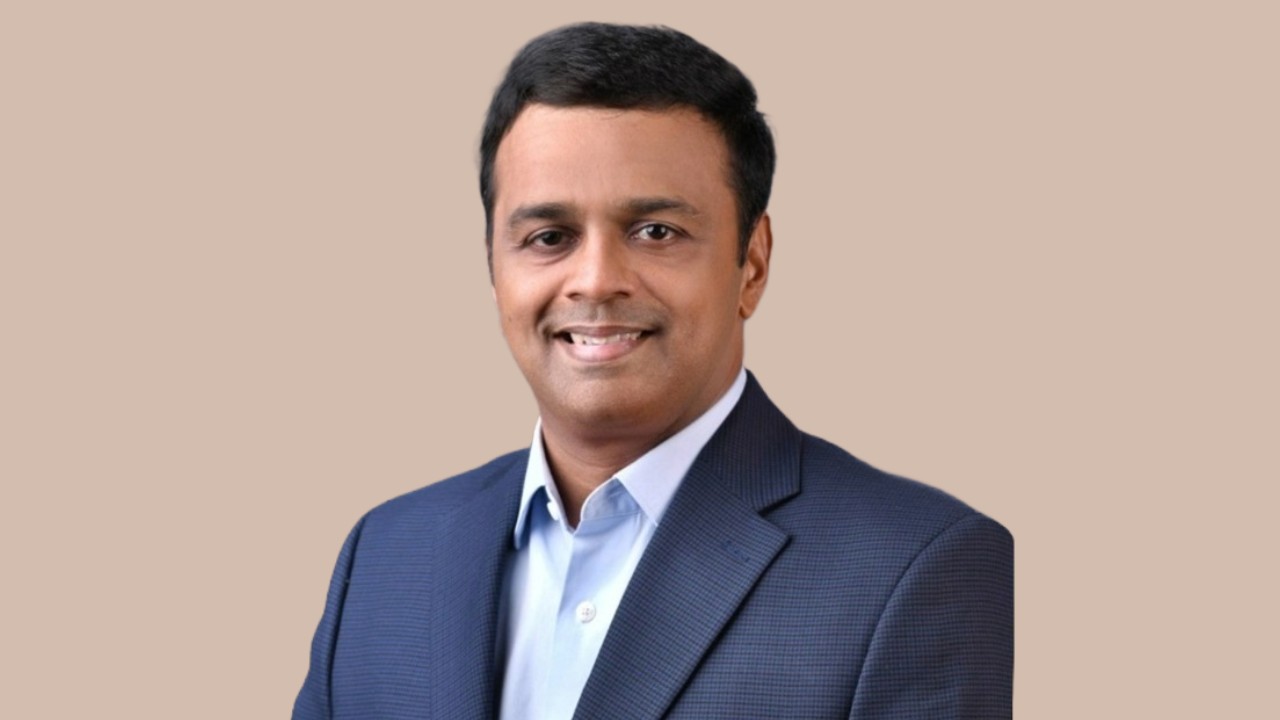Harcharan Singh Mittu stands as a paragon in the IT industry, celebrated for his profound technical acumen and visionary leadership. With a career spanning over 25 years, Harcharan’s journey from electronics to IT has been nothing short of transformative. He is an authority in systems and data center management, with a formidable grasp of cloud automation, virtualization, DevOps, CI/CD, and systems administration across various Unix and Linux platforms. His technical credentials, including TOGAF 9.2, AWS, and ethical hacking certifications, underscore his exceptional expertise.
In 2017, Harcharan founded XOR Bit Infotech Pvt. Ltd., an enterprise dedicated to IT consultancy, cloud solutions, and software development. His entrepreneurial zeal and innovative mindset have propelled the company to industry prominence, earning it a reputation for reliability and excellence. Harcharan’s passion for mentoring has shaped the careers of countless engineering students and professionals. His holistic educational approach blends technical prowess with invaluable life lessons, nurturing well-rounded individuals poised to conquer both professional and personal challenges.
Harcharan’s personal philosophy, deeply rooted in unwavering faith in the Supreme, guides him through life’s vicissitudes with a profound sense of purpose and peace. His charismatic and fun-loving nature underscores his belief in the importance of joy, humor, and social connections. Harcharan’s vision extends beyond personal success; he aspires to cultivate a community of skilled, multifaceted individuals capable of pioneering innovations in the dynamic field of data center technologies. Financially ambitious, he aims to amass significant wealth to effect lasting societal impact through high-paying jobs, advanced training programs, and cultural preservation.
Harcharan’s accolades, including being named one of India’s Magnificent CIOs, reflect his relentless pursuit of excellence. His story is a testament to boundless ambition, steadfast faith, and a commitment to uplifting others, leaving an indelible legacy that will inspire future generations.
In an exclusive exchange with The Interview World, Harcharan Singh Mittu, Founder and CEO of XOR Bit Infotech Pvt. Ltd., provides a compelling overview of how data centers have evolved over the last decade. He dissects the pressing challenges that modern data centers face and reveals how the rise of cloud computing has dramatically shifted their landscape.
Harcharan articulates the transformative impact of AI on data center operations and underscores the critical need for energy efficiency and sustainability. He also highlights the paramount importance of data security and compliance. Moreover, Harcharan offers a forward-looking perspective on emerging trends in data center technology and infrastructure. Here’s a distilled look at the profound insights from his interview.
Q: Can you describe the evolution of data center technology over the past decade? What are some of the most significant advancements?
A: Over the past decade, data centers have transformed dramatically. What once were vast, hardware-heavy spaces filled with rows of noisy, heat-generating servers have evolved into sleek, efficient hubs of technology. Hardware has shrunk in size while packing more power, reducing the need for human interaction.
Virtualization emerged as a revolutionary force, reshaping resource utilization. By allowing multiple virtual machines to run on a single physical server, operations became significantly more efficient and scalable. Companies slashed their hardware investments, realizing substantial cost savings.
As the decade progressed, cloud computing also took center stage. Businesses gained the ability to access computing resources on-demand, much like flicking a switch to get electricity. Furthermore, public, private, and hybrid clouds offered the flexibility to scale resources up or down based on demand, eliminating hefty upfront investments.
The advent of hyperconverged infrastructure (HCI) simplified data center management further by integrating computing, storage, and networking into a unified system. This streamlined operations and boosted efficiency and agility. Software-Defined Networking (SDN) and Software-Defined Data Centers (SDDC) took this a step further, enabling complete virtualization of resources managed through software rather than hardware. This shift brought unparalleled flexibility and automation to data center operations.
With the rise of IoT, edge computing became indispensable. By processing data closer to its source, latency and bandwidth usage plummeted, a crucial advantage for applications requiring real-time data processing.
Innovations in cooling, such as liquid cooling and AI-driven systems, addressed the pressing concern of energy efficiency. These advancements also slashed operational costs and environmental impact, propelling data centers toward sustainability.
Finally, AI and machine learning have begun to play pivotal roles in data centers, from predictive maintenance to enhanced security protocols. These cutting-edge technologies ensure data centers operate smoothly and securely, heralding a new era of technological prowess.
Q: What are the primary challenges data centers face today, and how are they being addressed?
A: Today’s data centers grapple with formidable challenges, but let’s zero in on the most pressing ones. Imagine the relentless hum of servers, guzzling staggering amounts of energy. The scale of this consumption is mind-boggling. Yet, solutions are on the horizon. Embracing renewable energy sources, deploying advanced cooling technologies, and integrating energy-efficient hardware are crucial steps to slash this colossal energy footprint.
Data security remains an unyielding concern, like a fortress under perpetual siege. Robust encryption, multi-factor authentication, and relentless monitoring and threat detection are the bulwark against potential breaches.
As data volumes surge, scalability becomes an imperative challenge as well. Envision trying to cram an ever-expanding universe into a finite space. Cloud solutions, virtualization, and hyper-converged infrastructure (HCI) provide the agility and cost-efficiency needed to scale seamlessly.
Latency is another critical issue. In our high-velocity world, milliseconds count. Reducing latency, especially for real-time applications, is paramount. Edge computing and optimized network paths are the knights in shining armor, ensuring rapid and efficient data processing.
Lastly, compliance with stringent regulations like GDPR and HIPAA is akin to navigating a labyrinth. Rigorous data management policies and regular audits are also essential to staying on the right path and avoiding costly pitfalls.
Q: How has the adoption of cloud computing affected traditional data centers?
A: Cloud computing has revolutionized the role of traditional data centers. Imagine a world where businesses no longer pour resources into on-premises infrastructure. Instead, they tap into the cloud for on-demand resources, slashing capital expenditures.
This shift brings unparalleled scalability and flexibility, enabling companies to scale their infrastructure effortlessly. As a result, hybrid and multi-cloud strategies are now the norm, seamlessly blending on-premises and cloud resources for peak performance and cost efficiency.
Traditional data centers have evolved, embracing service-oriented architectures that provide infrastructure as a service (IaaS) and platform as a service (PaaS). This transformation ensures they remain vital in a cloud-centric era.
Q: What role does artificial intelligence play in modern data center operations and management?
A: In the realm of modern data centers, AI stands as the unseen maestro orchestrating flawless harmony. Its prowess is particularly evident in predictive maintenance, where it proactively spots potential hardware failures before they disrupt operations. This foresight not only slashes downtime but also trims maintenance costs.
AI’s impact extends to energy management, where it drives efficiency with unmatched precision. By fine-tuning cooling and power consumption, AI systems ensure data centers run at their peak, delivering substantial savings in both energy and expenses.
When it comes to security, AI emerges as an unyielding sentinel. It vigilantly detects and neutralizes threats in real time, offering robust defense against cyber-attacks. Moreover, AI takes over mundane tasks, liberating human operators to channel their efforts into more strategic endeavors.
Q: Can you discuss the importance of data center energy efficiency and sustainability? What measures are being taken to achieve these goals?
A: The significance of energy efficiency and sustainability in data centers cannot be overstated. These power-hungry facilities have long been a drain on resources, making it imperative to adopt strategies that curb their environmental impact.
Data centers are now embracing renewable energy sources like solar and wind power, dramatically slashing their carbon footprint.
Cutting-edge cooling technologies, such as liquid cooling and AI-driven systems, are also transforming the landscape. These innovations not only boost energy efficiency but also slash operational costs.
Furthermore, designing for energy efficiency is non-negotiable. Deploying low-power servers, storage solutions, and networking equipment is essential for crafting a truly sustainable data center.
Q: How do you ensure data security and compliance within a data center? What are some common vulnerabilities and how are they mitigated?
A: Securing data and maintaining compliance in data centers is a sophisticated operation that demands a multi-layered defense strategy. At its foundation lies encryption, the bedrock that shields data, whether it’s resting or in motion.
Access control is a vital layer, with rigorous policies and multi-factor authentication fortifying the perimeter against unauthorized breaches. Regular security audits and compliance checks act as relentless sentinels, ensuring unwavering adherence to standards like GDPR and HIPAA.
Intrusion Detection and Prevention Systems (IDPS) bolster security by vigilantly monitoring for threats and swiftly neutralizing risks. Equipping staff with knowledge about security best practices and emerging threats ensures a collective state of alertness.
To counteract common vulnerabilities such as weak passwords and outdated software, we enforce stringent password policies and mandate regular software updates. This proactive approach guarantees robust protection and unwavering compliance.
Q: What trends do you foresee in the future of data center technology and infrastructure?
A: In the future, AI and machine learning will turbocharge automation, elevate security, and amplify efficiency, transforming data centers into powerhouses of intelligence and resilience. As IoT devices multiply, edge computing will also soar, moving data processing closer to the source and slashing latency.
Sustainability will continue to dominate, with relentless strides toward greener technologies and renewable energy. The advent of 5G will supercharge data transmission, delivering unprecedented speed and reliability, and dramatically enhancing connectivity and performance. Quantum computing, though still in its early stages, is poised to revolutionize data processing and encryption, setting new benchmarks for what data centers can achieve. As threats evolve, cutting-edge cybersecurity technologies will be indispensable, safeguarding data centers in an increasingly digital age.








